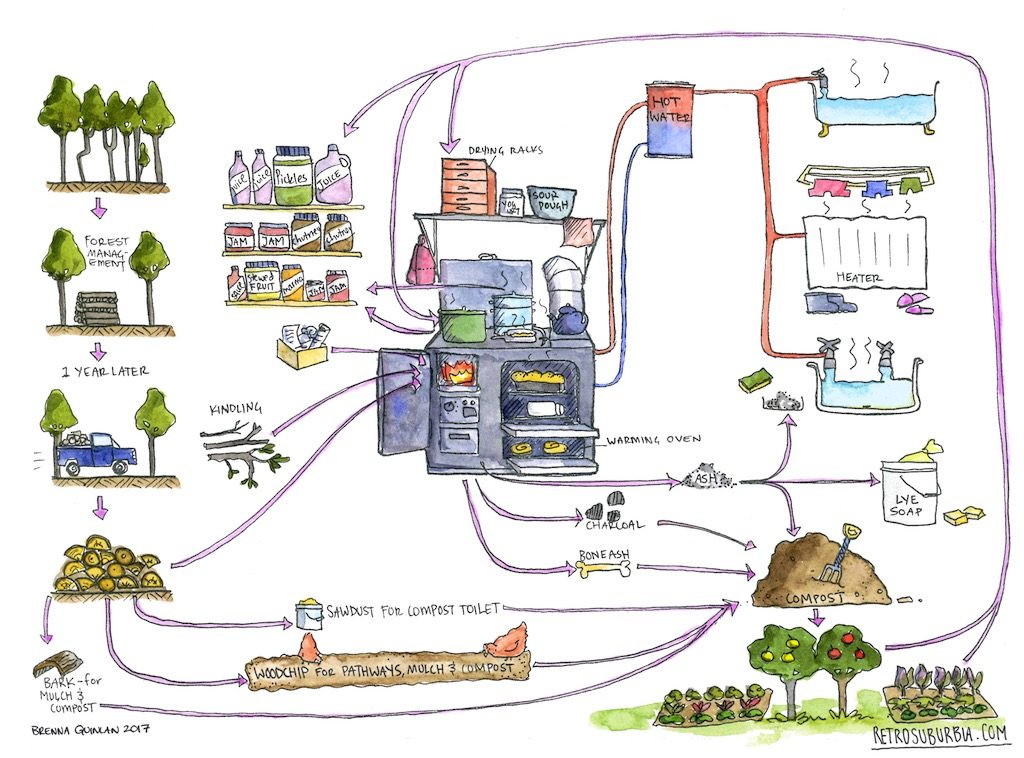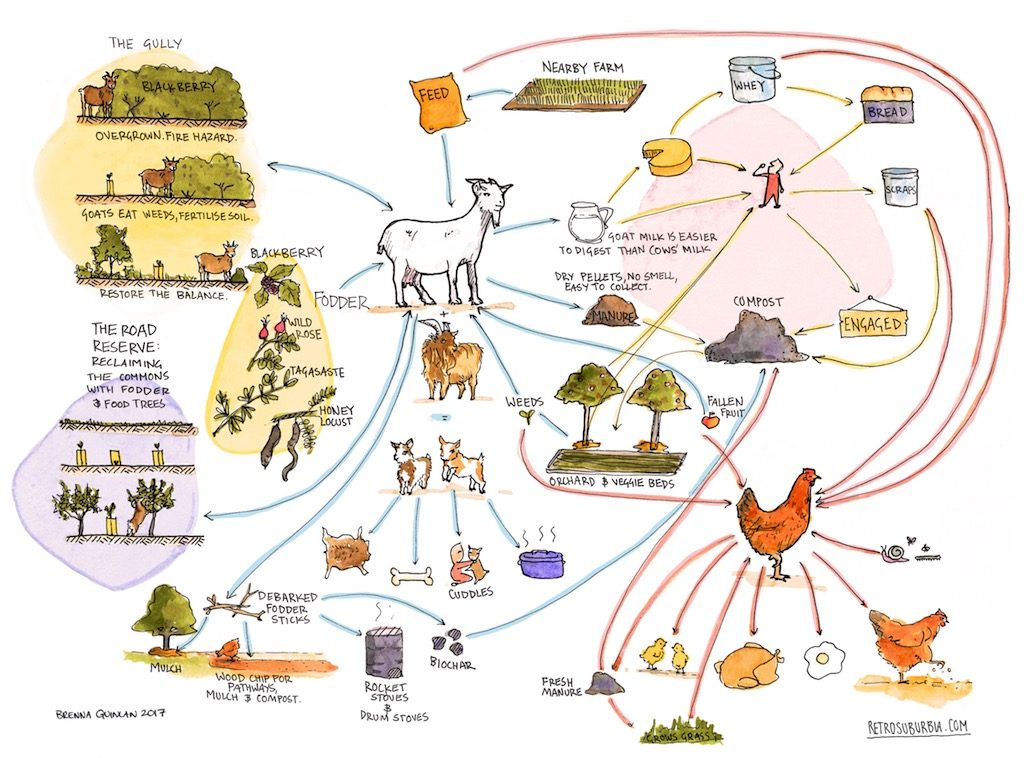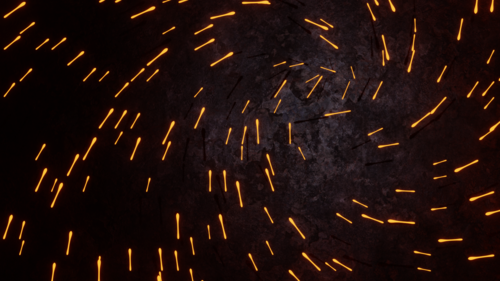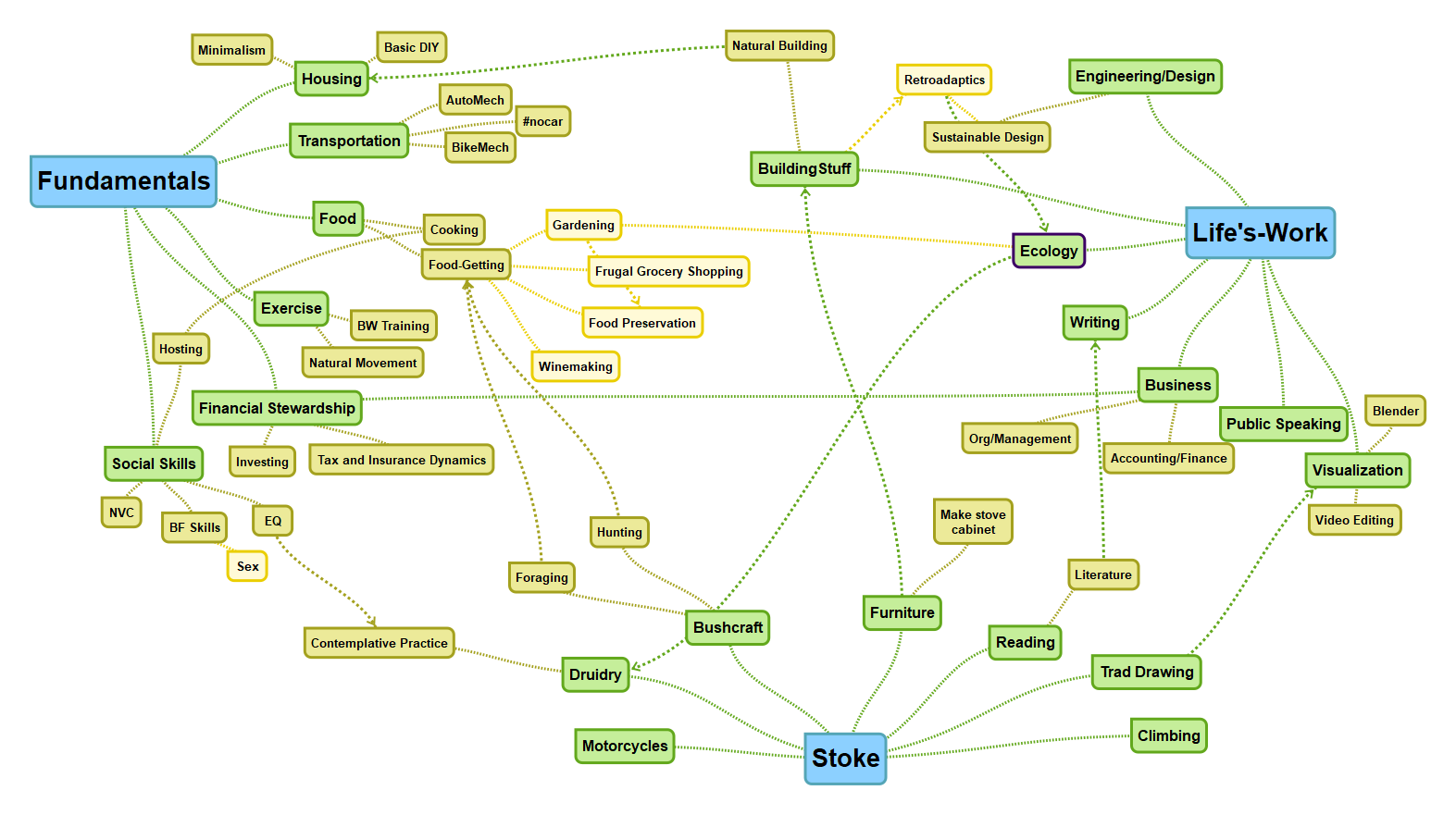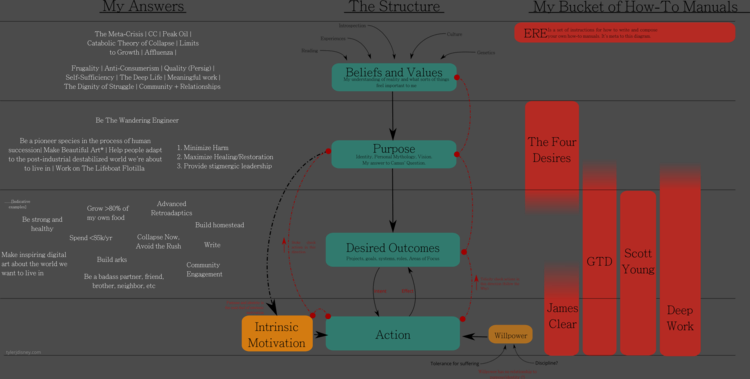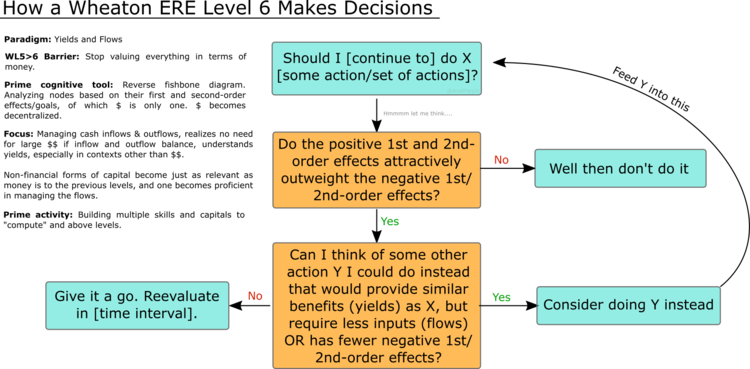I think diagramming exercises like the PDC examples are useful for analyzing an individual’s system. I’ve used it to try to make sense of my system, and could use it to try to make sense of someone else’s system. But this is at the level of example, of observation of *effect*. Which is great if that’s what you’re going for, but this path skirts along the edge of Mt Confusing the Map for the Territory. Like if someone were to look at Jacob’s map and think that in order to be WL8.5 you have to own a house and make clocks.
To me, the first question to get clear on is are you trying to explain What decisions have been made, or How those decisions have been made? As the WL’s describe mindset, the latter is the most interesting question to get at. I think actually a lot of work has been done on the forum coming up with examples of the kinds of decisions one makes at different levels, but it seems to me (might be just part of my cognitive weaknesses/style) that somewhat less work has been done attempting to describe How the decisions are made. The most concise descriptions are in the book, of course, but building on and around that can be fruitful.
This is my attempt to create a decision tree for wl5:
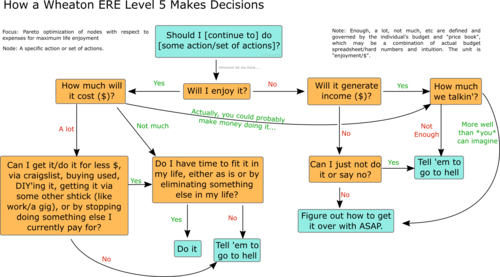 hires
hires
The following are attempts I made to sketch WoG diagrams, which was one of my first MMG projects. I made a new WoG every week. My conclusion for the project was that I learned a great deal from the effort, mostly that attempting to diagram a full WoG is maybe impossible, but doing the exercise was valuable to appreciate how complex a real WoG actually is.
 HiRes
HiRes
 hires
hires
Attempting to make these diagrams made me appreciate Jacob’s comment that have a set of simple heuristics is powerful. For me, I think putting effort into clearly articulating one’s heuristics goes a lot further and is more robust than attempting to diagram a WoG.
To me, the promise of diagramming my WoG was that I would be able to “see” it all at once and “grok it”… like Neo in the matrix or something. My efforts to diagram convinced me that a) I’m not The One and b) therefore I can’t see the whole thing. Instead, I think it terms of running all aspects of my life through my heuristics filter as often as possible. Very much like Boyd’s OODA loop, and my ERE heuristics live inside my Orientation and Decision blocks.
To me, making explicit the heuristics is the same as explaining WLn.
WL6 Heuristics:
>Take a node/activity/fact of my life for consideration.
>What is it that I really value from this activity - what are the positive 1st and second order effects? (e.g. I don’t like “DH/FR mountain biking”, I like “physical exertion and risk, being outdoors, technical mastery, and being with friends, and adventure”.)
>What inputs are required to achieve this yield? What are the 1st and 2nd order effects? (Pretty much need a vehicle to get bike to trailhead, bikes are expensive, broken parts (bike and personal flesh bag) are expensive to fix, etc).
>Are the negative first and second order effects acceptable? (“Damn, self, owning a truck is kind of a lot. And I can’t see how to FR/DH for less than N$/yr realistically, and there’s always the chance I’ll get speared in the femoral by a snapped handlebar…”)
>Is there a different activity that results in the yields I desire with fewer negative effects? (“Well, hell, climbing has lower capx AND opx, it’s totally possible to dirtbag around bumming rides and that actually increases the sense of adventure….”)
.A heuristic I’ve only starting thinking about recently is “What is this activity missing? What positive yield do I care about that this activity isn’t bringing me?” One obvious example is “potential for remuneration”. Climbing almost definitely has no potential for remuneration for one such as I, and I should be factoring that in when I run heuristics. Another is “alignment with mission.”
.Generally, I see negative effects as waste or friction, and I try to minimize or avoid them. At this level of thinking, my “hammer” is to typically cease that activity (e.g. sell my DH/FR bike) and replace the node with some other activity.
At WL6, I can really only think one node/activity at a time. It takes effort to really think through each activity, each node, and so I can’t hold more than one in my head a time, typically. At most I’ll be able to see a connection of yields or flows from one node/activity to another.
The promise of wl7, as I understand it, is that I’ll have reached a level of competence and internalization of WL6 thinking so instead of having to focus to see the “guts” of each node, I intuitively do WL6 thinking and decision making, and my cognition will “lift” to the level of perceiving the yields and flows of all the nodes together. I assume it will start to come together in “chunks” - e.g. I’ll have three or so nodes that I’ve spent a lot of time working on the internals of, that all sort of relate to each other, and all of a sudden I’ll realize I’m thinking of all three of those together as “a thing” rather than “three things”, and I will make decisions for the sake of The Chunk as opposed to each of The Pieces. A mature WL7 thinker would see all the nodes in the entire system together as The Chunk, the Thing that is being Considered. (???)
